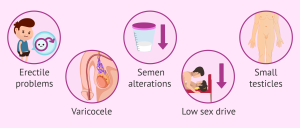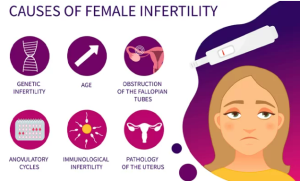Large numbers of people are affected by infertility in their lifetime, according to a new report published by the World Health Organisation.
Around 17.5 per cent of the global adult population – roughly one in six worldwide – experience infertility, showing the urgent need to increase access to affordable, high-quality fertility care for those in need.
The new estimates show limited variation in the prevalence of infertility between regions. The rates are comparable for high-, middle- and low-income countries, indicating that this is a major health challenge globally.
Lifetime prevalence was 17.8 per cent in high-income countries and 16.5 per cent in low- and middle-income countries.

The WHO report was based on studies on the global and regional prevalence of infertility from 1990 to 2021.
Infertility is a disease of the male or female reproductive system, defined by the failure to achieve a pregnancy after 12 months or more of regular unprotected sexual intercourse.
It can cause significant distress, stigma, and financial hardship, affecting people’s mental and psychosocial well-being.
Despite the magnitude of the issue, solutions for the prevention, diagnosis, and treatment of infertility – including assisted reproductive technology such as in vitro fertilization – remain underfunded and inaccessible to many due to high costs, social stigma, and limited availability.
Infertility is a disease of male or female reproductive system, defined by failure to achieve pregnancy after 12 months of regular unprotected sex
“At present, in most countries, fertility treatments are largely funded out of pocket, often resulting in devastating financial costs. People in the poorest countries spend a greater proportion of their income on fertility care, compared to people in wealthier countries.
“High costs frequently prevent people from accessing infertility treatments or alternatively, can catapult them into poverty as a consequence of seeking care,” the WHO said in a press statement.

The Director General of WHO, Dr. Tedros Ghebreyesus, said the report reveals an important truth – infertility does not discriminate.
“The sheer proportion of people affected shows the need to widen access to fertility care and ensure this issue is no longer sidelined in health research and policy so that safe, effective, and affordable ways to attain parenthood are available for those who seek it,” he said.
“Millions of people face catastrophic healthcare costs after seeking treatment for infertility, making this a major equity issue; and, all too often, a medical poverty trap for those affected,” said the Director of Sexual and Reproductive Health and Research at WHO, Dr Pascale Allotey, including the United Nations’ Special Programme of Research, Development and Research Training in Human Reproduction.
“Better policies and public financing can significantly improve access to treatment and protect poorer households from falling into poverty as a result,” Allotey added.
While the new report shows convincing evidence of the high global prevalence of infertility, it highlights a persistent lack of data in many countries and some regions.
The sheer proportion of people affected shows the need to widen access to fertility care and ensure the issue is no longer sidelined in health research and policy
It calls for greater availability of national data on infertility disaggregated by age and by cause to help with quantifying infertility, as well as knowing who needs fertility care and how risks can be reduced.
WHO is calling for greater policy prioritisation of infertility, noting, “We’re calling for greater access to infertility services, and we’re calling for greater evidence, better evidence to be able to address the treatment issues.”


